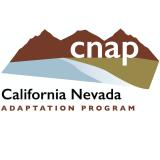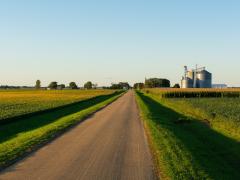For the latest forecasts and critical weather information, visit weather.gov.
Evaporative Demand Increase Across Lower 48 Means Less Water Supplies, Drier Vegetation, and Higher Fire Risk
In the western U.S., the impacts of drought conditions in the 21st century are increasingly evident as extended fire seasons, dwindling water supplies, and widespread tree mortality are becoming more common occurrences. Fundamentally, drought is a shortage of water that is driven by an imbalance between supply and demand. From a meteorological perspective, periods of low precipitation (i.e., the supply side) have historically been the dominant driver of drought, but because a warmer atmosphere can hold more water, the demand side of drought has the potential to have a greater influence than it has in the recent past as temperatures increase with a changing climate.
Increases in atmospheric water demand results in more water being drawn from the land surface into the atmosphere through evaporation and transpiration from plants, which can limit the amount of water available to humans and ecosystems, especially in arid regions where less water is available in the first place. And while temperature changes across the U.S. of 1–2 degrees over the past 40 years are well known and established, changes in atmospheric evaporative demand—defined as the amount of water that could be transferred from the land surface to the atmosphere, given atmospheric conditions and an unlimited supply of water—are not as well quantified and may be amplified or subdued by changes in other climate variables that go into calculating evaporative demand, such as wind speed, solar radiation, and humidity.
To address this gap, researchers from the Desert Research Institute, with funding from NIDIS, conducted a study to answer three questions: 1) how much has evaporative demand changed across the continental U.S., 2) how consistent are the observed changes among different commonly used datasets, and 3) what climate variables are predominantly driving this change? To do this, they quantified reference evapotranspiration (ETo), which is a standardized measure of evaporative demand that would occur across an idealized and specific well-watered ‘reference’ surface composed of short grass.
To answer the first two questions, the researchers summarized total evaporative demand for each year between 1980–2020 using five different datasets and ran a trend analysis to quantify how much change occurred. They found that evaporative demand is increasing across nearly all of the U.S., and especially in the West and the Southwest—namely the Rio Grande and Lower Colorado River basins (See figure below). Although most of the study area showed increases in evaporative demand, on average, there were substantial differences among the datasets in the direction and total amount of change across large portions of the eastern and central U.S. This result underscores the importance of assessing changes using multiple lines of evidence.

To answer the third question, the researchers conducted a sensitivity analysis to identify which of the four climate variables used to calculate evaporative demand, including temperature, specific humidity, wind speed, and incoming solar radiation, are driving the changes and identified how this varied across the country. Not surprisingly, they found that temperature is the most important driver, contributing about 60% of the change, on average, but other variables served to either enhance or limit the amount of change, and this varied across different parts of the country. For example, despite similar changes in temperature between the eastern and western U.S., increases in humidity in the East helped to counteract the effect of temperature increases, resulting in little to no increase in evaporative demand in some places, while decreases in humidity in the western U.S. amplified the change and resulted in much greater increases in evaporative demand.
Overall, this study showed that evaporative demand has already increased across much of the U.S. over the past 40 years and is emerging outside the range of what was experienced just 20–40 years ago in some places. The study concludes, “These higher evaporative demands mean that, for every drop of precipitation that falls, less water is likely to drain into streams, wetlands, and aquifers across the region. Soils and vegetation spend more time in drier conditions, increasing potential for forest fire, tree mortality, and tree regeneration failure.” The authors further conclude that increased evaporative demand constitutes a persistent new forcing on western landscapes and water supplies that will be an essential consideration for land and water management planning going forward.
The study team included Christine Albano, Daniel McEvoy, Justin Huntington, Charles Morton, and Thomas Ott of the Desert Research Institute; John Abatzoglou from University of California, Merced; and Michael Dettinger of Scripps Institution of Oceanography at UC San Diego. In addition to NIDIS funding, the research was supported by the Sulo and Aileen Maki Endowment Fund to the Desert Research Institute, the NOAA California-Nevada Climate Applications Program (a NOAA RISA team), the NASA Applied Sciences Water Resources Program, the U.S. Geological Survey Landsat Science Team, and the USDA National Institute of Food and Agriculture.







